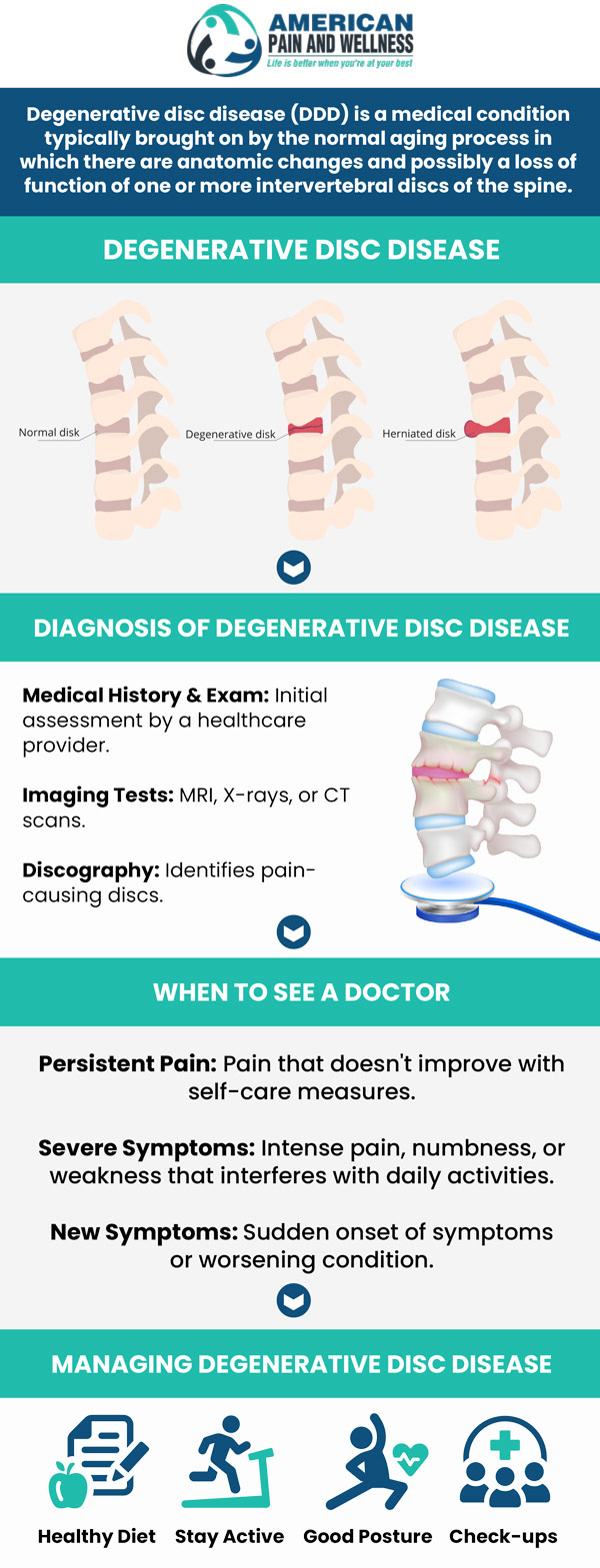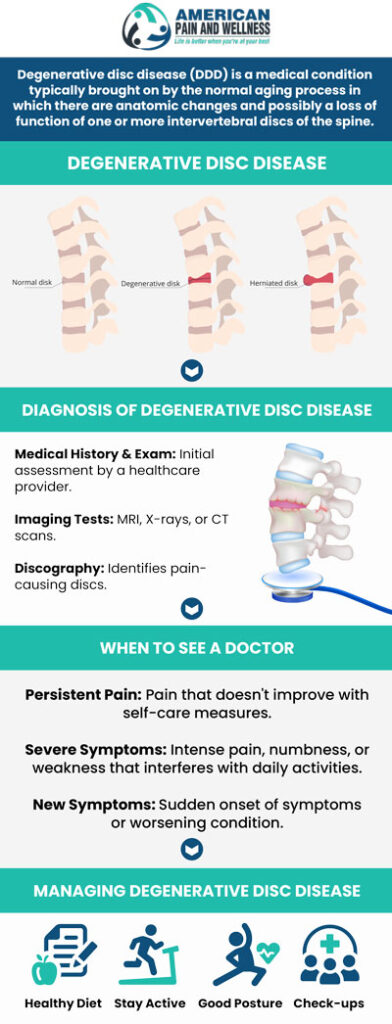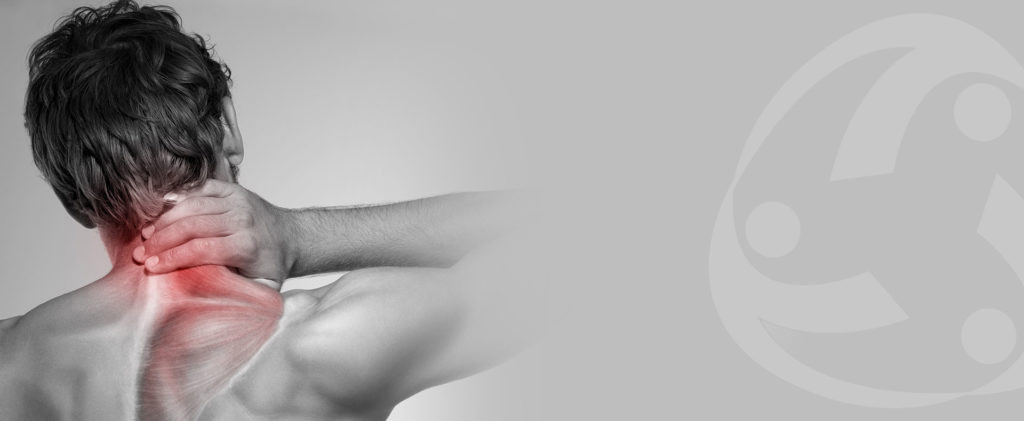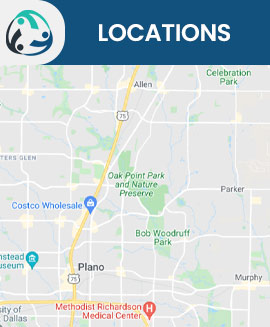Degenerative Disc Disease Specialist in Plano TX
It is relatively common for degenerative disc disease to present as we age. Neck and back pain are the most common symptoms of degenerative disk disease. Numbness or tingling in your arms or legs is caused by pain. Thankfully, American Pain and Wellness offers several nonsurgical and surgical treatment options. Contact us or book an appointment online for more information. We are conveniently located at 7920 Preston Road, Suite 400, Plano, TX, 75093.




Table of Contents:
What does the pain from degenerative disc disease feel like?
At what age does degenerative disc disease begin?
Where is degenerative disc disease most common?
What are the long-term effects of degenerative disc disease?
People experience chronic pain in a variety of ways, ranging from almost no pain to mild irritation to severe, disabling pain. This is referred to as baseline pain and is somewhat variable from individual to individual.
Some cases of chronic pain caused by degenerative disc disease are severe and completely disabling, but they are relatively rare.
There are some common ways degenerative disc disease presents itself. For some, whenever you bend or twist your spine, or lift something heavy, you feel more pain. The feeling that the neck or back is giving out, as if it is unable to provide basic support, and locking up and making movement difficult. A common effect of spinal instability is muscle tension or muscle spasms.
There are instances when a degenerated disc may not cause pain, but muscle spasms can be extremely painful and temporarily incapacitating. There is a possibility of radiating pain that feels hot, sharp, or stabbing. When someone has cervical disc degeneration, they feel pain in their shoulder, arm, or hand (called cervical radiculopathy); when they have lumbar disc degeneration, they feel pain in their hips, buttocks, or back of the leg (called lumbar radiculopathy).
There are some minor lifestyle adjustments individuals can make to potentially ease the symptoms of degenerative disc disease. For instance, standing or sitting for long periods of time can exacerbate low back pain, and looking down at a phone or book can worsen neck pain. It is less painful to change positions frequently rather than remain seated or standing for long periods of time. Additionally, regular neck stretches can reduce neck disc pain, and frequent short walks can reduce lumbar disc pain. The use of a pillow that maintains the neck’s natural curvature while sleeping can alleviate pain, such as sitting in a reclining position or lying down with a pillow under the knees.
Intervertebral discs undergo changes as people age. It is possible for them to dry out, thin, or crack. There may be a bulge or herniation of the soft cartilage core through the fibrous outer portion of the disc. Age-related processes are described under the umbrella term degenerative disc disease.
Discs in the spine degenerate over time in most people. At least 30% of people will show signs of disc degeneration at some level by the time they are 35. Over 90% of people will have some degree of disc degeneration by the age of 60. It is normal for degeneration to occur, and it is not necessarily painful. Degeneration without pain is just called degeneration. Degenerative disc disease occurs when discs degenerate and cause pain and other symptoms.
It is common for degenerative disc disease to occur in the neck or the lower back due to the amount of motion and wear and tear these areas endure. Low-grade, continuous pain is the most common symptom of degenerative disc disease, with occasional flare-ups of more severe, potentially disabling pain.
Pain flare-ups are sometimes caused by recent activity or abnormal stress on the spine, but they can also occur suddenly without any apparent cause. It is possible for episodes to last for a few days to several weeks before returning to low levels of pain or temporarily disappearing completely.
Disc degeneration and vertebral compression lead to excessive joint friction, resulting in bone spurs and nerve damage. Age-related changes may also cause long-term problems like arthritis, herniated discs, and spinal stenosis, depending on their severity.
In order to strengthen the muscles and relieve symptoms, there are multiple treatment options available. Before exploring surgical options, we always try nonsurgical methods at American Pain and Wellness. Surgical correction is, of course, an option in some cases. Those diagnosed with degenerative disc disease can find lasting relief at American Pain and Wellness through non-surgical and surgical options. For more information, contact us or request an appointment online. We are conveniently located at 7920 Preston Road, Suite 400, Plano, TX, 75093. We serve patients from Plano TX, Allen TX, Fairview TX, McKinney TX, Parker TX, Lucas TX, Murphy TX, Frisco TX, Richardson TX, and Collin County Texas.

Additional Services You May Need

Additional Services You May Need
• BACK AND NECK PAIN
• FACET INJECTIONS
• JOINT INJECTIONS
• PAIN MANAGEMENT
• REGENERATIVE MEDICINE
• PRP INJECTIONS
• HERNIATED DISC
• SPINE PAIN MANAGEMENT
• ARTHRITIS
• MUSCLE PAIN
• RHEUMATOLOGIC PAIN MANAGEMENT
• SACROILIAC JOINT PAIN
• NERVE PAIN
• ABDOMINAL AND PELVIC PAIN
• SPINAL STENOSIS
• SCIATICA TREATMENT
• PHYSICAL REHABILITATION THERAPY
• COMPLEX REGIONAL PAIN SYNDROME
• OSTEOARTHRITIS
• IMMEDIATE RELIEF FOR SCIATICA PAIN
• EPIDURAL STEROID INJECTIONS
• DYSTONIA
• CHRONIC PAIN
• CANCER PAIN
• AUTO ACCIDENT INJURY
• ARACHNOIDITIS




